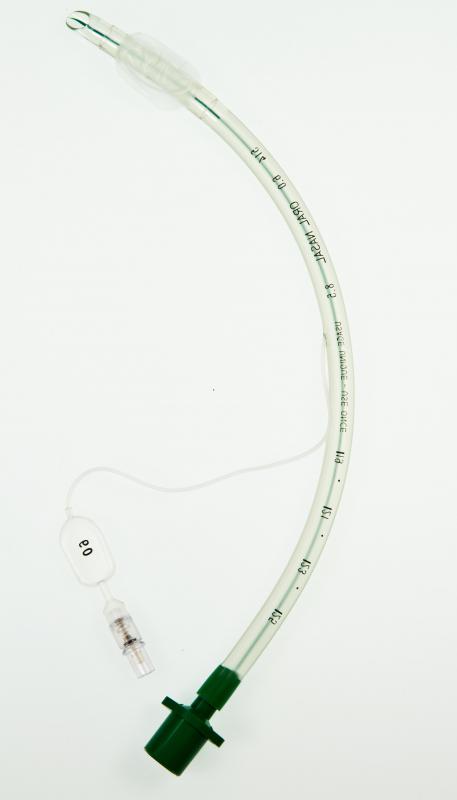At TheHealthBoard, we're committed to delivering accurate, trustworthy information. Our expert-authored content is rigorously fact-checked and sourced from credible authorities. Discover how we uphold the highest standards in providing you with reliable knowledge.
What Are the Different Intubation Techniques?
Intubation is the process of inserting a tube into the body so air and fluids can be removed or supplied. Though the most common intubation is to assist patients with breathing when an airway is constricted, there are many intubation techniques used for general surgeries. Some of the different intubation techniques include endotracheal intubation, nasogastric intubation, nasotracheal intubation, fiber optic intubation, and videolaryngoscopy intubation.
Endotracheal intubation is one of the temporary intubation techniques used primarily by anesthesiologists during surgeries to keep a patient’s airway open while asleep. A breathing tube is inserted through the mouth and into the trachea. Air is then delivered through the tube so the patient can breathe without a mask over the face. Once the surgery is completed, the anesthesiologist removes the tube by pulling it back out of the mouth.

Nasogastric intubation is a common technique used when a patient has trouble eating due to conditions such as reflux or throat abnormalities. Premature infants who do not have the strength to suckle may also be intubated with a nasogastric tube to aid in weight gain. This technique is a more permanent solution and involves inserting an endotracheal tube through the nose and into the stomach. Air is pumped out of the stomach and nutrients are fed into the stomach. This allows the patient to receive sufficient nutrients without vomiting.

Nasotracheal intubation is one of the intubation techniques used when the patient’s mouth cannot be opened, such as in seizure patients, or when a patient as some sort of neck trauma and cannot be moved. In a nasotracheal intubation, a tube is inserted through the nose and into the trachea. This opens the airway and allows the patient to breathe. This method is often called the “blind” method because the insertion is done without the use of a camera.
Fiber optic intubation, as the name suggests, uses a fiber optic scope to assist the medical professional with placing the tube in the proper position. The fiber optic equipment is thinner than the tube and contains a camera on the end. The camera and tube are inserted into the patient’s throat and once the optimum position is found, the intubation tube is slid in over the camera tube. The camera tube is removed leaving only the intubation tube in place.
Videolaryngoscopy intubation is similar to fiber optic intubation techniques but is used primarily for premature newborns. Videolaryngoscopy uses a tiny camera inside a metal tube equipped with a blade. The equipment also includes a light which makes it easier for the surgeon to guide the blade where the incision for the required surgery needs to be. By using videolaryngoscopy intubation, the surgeon can eliminate the need for multiple intubation attempts which can permanently damage the airways such a small infant.
AS FEATURED ON:
AS FEATURED ON:












Discuss this Article
Post your comments